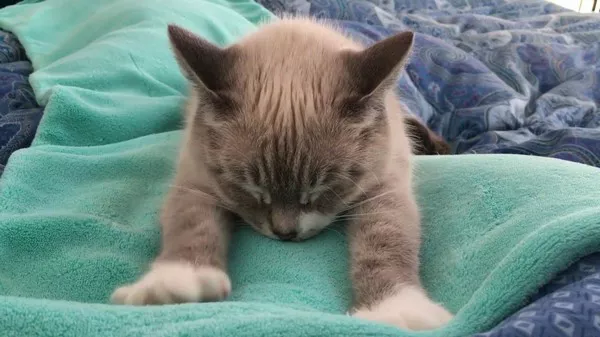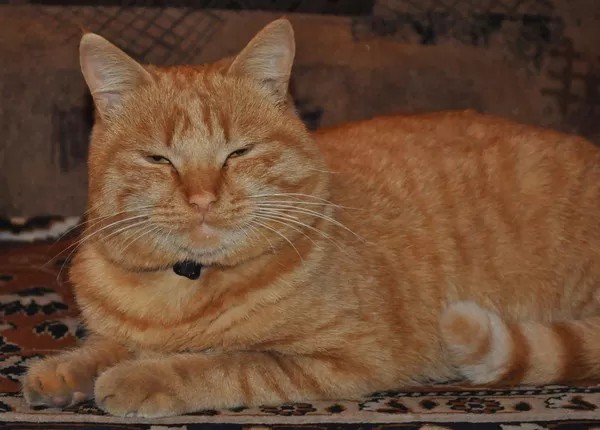Persian cats, with their luxurious long coats and distinctive facial features, are beloved companions in many households. One common grooming aspect unique to these feline beauties is the care of their eyes. Persian cats are prone to tear staining and eye discharge, which can lead to discomfort and potential health issues if not addressed properly. In this comprehensive guide, we will explore the reasons behind Persian cat eye issues, how to clean Persian eyes safely, and preventive measures to maintain optimal eye health.
Understanding Persian Cat Eye Issues:
Persian cats, known for their brachycephalic facial structure (shortened skull), are predisposed to certain eye issues. The prominent facial features, including large, round eyes and a flat face, contribute to tear staining and eye discharge. Common eye problems in Persian cats include:
Tear Staining:
Tear staining occurs when tears produced by the eyes, which contain pigments, accumulate on the fur around the eyes. This can lead to unsightly reddish-brown stains and, if left untreated, may cause skin irritation.
Epiphora (Excessive Tearing):
Due to their facial structure, Persian cats may experience excessive tearing. This can result from blocked tear ducts, eye infections, or environmental factors.
Eye Discharge:
Excessive eye discharge, often seen as a gooey or crusty substance around the eyes, can be a sign of eye infections or other underlying health issues.
Eye Infections:
Persian cats are susceptible to eye infections, including conjunctivitis and bacterial infections. These infections can lead to increased tearing, redness, and discomfort.
The Importance of Regular Eye Cleaning:
Routine eye cleaning for Persian cats is crucial for several reasons:
Preventing Infections:
Regular cleaning helps prevent bacterial and viral infections that can affect the eyes. Maintaining a clean eye area reduces the risk of conjunctivitis and other eye-related ailments.
Reducing Tear Staining:
Consistent cleaning helps minimize tear staining, keeping the fur around the eyes clean and preventing the formation of unsightly stains.
Comfort and Well-being:
Persian cats with excessive tearing or eye discharge may experience discomfort. Cleaning their eyes provides relief and contributes to their overall well-being.
Early Detection of Issues:
Regular eye cleaning allows cat owners to detect any abnormalities or signs of infection early on, facilitating prompt veterinary intervention if needed.
Materials Needed for Persian Cat Eye Cleaning:
Before starting the eye-cleaning process, gather the necessary materials to ensure a smooth and safe experience for both you and your Persian cat. Essential items include:
Sterile Saline Solution:
Use a sterile saline solution specifically formulated for eye cleaning. Avoid using tap water or homemade solutions, as they may cause irritation.
Clean, Soft Cotton Balls or Pads:
Opt for non-abrasive, lint-free cotton balls or pads to avoid causing any irritation to the delicate skin around the eyes.
Gentle Cat Shampoo (Optional):
In cases of stubborn tear stains, a mild and cat-friendly shampoo may be used to clean the fur around the eyes. Ensure it is safe for feline use.
Treats or Rewards:
Have some treats or rewards on hand to encourage positive behavior during the cleaning process. This helps create a positive association with the experience.
Towel or Pet Wipes:
Keep a towel or pet wipes nearby to clean any accidental spills or to wipe your cat’s face after the cleaning process.
Step-by-Step Guide to Cleaning Persian Cat Eyes:
Follow these steps for effective and safe eye cleaning for your Persian cat:
Prepare the Environment:
Choose a quiet and well-lit area for the cleaning process. Have all the necessary materials within reach, and ensure your cat is comfortable and calm.
Wash Your Hands:
Wash your hands thoroughly before handling your cat’s face to prevent the transfer of dirt or bacteria.
Gentle Petting and Calming:
Spend a few minutes gently petting and calming your cat. This helps create a relaxed atmosphere and prepares your cat for the grooming process.
Offer Treats and Positive Reinforcement:
Present treats or rewards to your cat, associating the grooming session with positive experiences. This helps build trust and cooperation.
Moisten a Cotton Ball with Saline Solution:
Moisten a clean, soft cotton ball or pad with sterile saline solution. Squeeze out excess liquid to avoid dripping.
Hold Your Cat Comfortably:
Hold your cat securely but gently. If needed, enlist the help of a friend or family member to provide additional support.
Gently Wipe the Eye Area:
With the moistened cotton ball, gently wipe the eye area from the inner corner towards the outer edge. Use a separate cotton ball for each eye to prevent the spread of any potential infection.
Avoid Direct Contact with the Eye:
Avoid direct contact with the eyeball, and focus on cleaning the fur and removing any discharge. If there are signs of infection or discomfort, consult your veterinarian.
Use a Different Cotton Ball for Each Eye:
To prevent cross-contamination, use a fresh cotton ball for each eye. This ensures that any potential infection is not spread from one eye to the other.
Repeat as Needed:
Depending on the severity of tear staining or discharge, you may need to repeat the process regularly. Follow your veterinarian’s recommendations for the frequency of eye cleaning.
Optional: Shampoo for Tear Stains:
If tear stains persist, you can use a mild cat shampoo specifically formulated for tear stains. Follow the product instructions, ensuring it is safe for feline use. Rinse thoroughly and pat the area dry.
Reward and Praise:
Once the eye cleaning process is complete, offer additional treats and praise to reinforce positive behavior. This helps your cat associate the experience with positive outcomes.
Monitor for Discomfort:
After cleaning, observe your cat for any signs of discomfort, irritation, or increased tearing. If you notice any concerning changes, consult your veterinarian.
Regular Veterinary Check-Ups:
Schedule regular veterinary check-ups to monitor your Persian cat’s overall eye health. Your veterinarian can provide guidance on preventive care and address any underlying issues.
Preventive Measures for Persian Cat Eye Health:
In addition to regular eye cleaning, implementing preventive measures contributes to maintaining optimal eye health in Persian cats:
Regular Veterinary Check-Ups:
Schedule routine veterinary check-ups to monitor your cat’s overall health, including eye health. Early detection of issues is key to effective intervention.
Healthy Diet:
Provide a balanced and nutritious diet to support your cat’s overall well-being, including eye health. Consult your veterinarian for dietary recommendations.
Hygiene Practices:
Maintain good hygiene practices, including regular grooming and cleaning of your cat’s face. Keep the eye area clean to reduce the risk of tear staining and infections.
Environmental Considerations:
Ensure your home environment is free from potential irritants, such as dust or smoke, which can contribute to eye issues. Keep litter boxes clean to prevent contamination.
Regular Exercise:
Encourage regular exercise to promote overall health and reduce stress. Physical activity supports a strong immune system, contributing to eye health.
Tear Stain Supplements:
Some cat owners opt for tear stain supplements, which may help reduce tear staining. Consult your veterinarian before introducing any supplements to your cat’s diet.
Monitor Allergies:
Be aware of potential allergies that may contribute to excessive tearing or eye discharge. Consult your veterinarian if you suspect allergies are a concern.
Avoid Smoking in the Home:
If you smoke, avoid smoking indoors. Secondhand smoke can irritate your cat’s eyes and contribute to eye-related issues.
Common Mistakes to Avoid:
While cleaning your Persian cat’s eyes, it’s essential to avoid common mistakes that may lead to discomfort or complications:
Using Harsh Substances:
Avoid using harsh substances such as soaps, human eye drops, or homemade solutions on your cat’s eyes. Stick to veterinarian-recommended sterile saline solution.
Forcing the Process:
If your cat is resistant or stressed, avoid forcing the cleaning process. Take breaks, offer treats, and ensure a positive experience to prevent fear or anxiety.
Neglecting Regular Veterinary Check-Ups:
Regular veterinary check-ups are crucial for monitoring your cat’s overall eye health. Neglecting these check-ups may result in undetected issues.
Ignoring Signs of Discomfort:
If your cat shows signs of discomfort, redness, or increased tearing, consult your veterinarian promptly. Ignoring these signs may lead to worsening conditions.
Overlooking Environmental Factors:
Consider environmental factors that may contribute to eye issues, such as dusty surroundings or exposure to allergens. Addressing these factors supports eye health.
Using Dirty or Abrasive Materials:
Ensure the materials used for eye cleaning are clean, soft, and non-abrasive. Dirty materials may introduce bacteria, and abrasive materials can cause irritation.
Skipping Treats and Positive Reinforcement:
Offering treats and positive reinforcement during and after the cleaning process is crucial. Skipping this step may result in a negative association with grooming.
See Also: How to Clean Sphynx Cat Eyes
Conclusion:
Caring for your Persian cat’s eyes is an integral part of responsible pet ownership. By understanding the unique needs of these feline companions and incorporating regular eye cleaning into their grooming routine, you contribute to their overall health and well-being. Preventive measures, such as maintaining a healthy diet, regular veterinary check-ups, and a clean living environment, complement the eye-cleaning process. With patience, positive reinforcement, and a commitment to proper eye care, you can ensure that your Persian cat’s eyes remain vibrant, healthy, and as captivating as their delightful personalities.


























